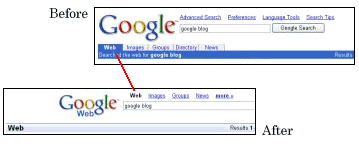Tuesday, March 30, 2004
Answering Questions, Automated
The research paper mentioned previously got me thinking about a new spin to Egobot, a program giving answers to questions. Egobot works with predefined question types, so that I have a clear answer pattern which I then match using the Google Web API.
So in Egobot, if you ask “Who is ... Bill Gates?” then all I do is rephrase the question into the answer “Bill Gates is ...” and find occurrences of this online. In other words the answer sentence is clearly defined because the possible questions are clearly defined. Nevertheless as soon as you start to break this “expected behavior”, e.g. by writing “Who is ... Bill Gates talking to mostly?” – then suddenly the answer would be “Bill Gates talking to mostly is ...”, which does not make sense.
Ironically, an even simpler approach with even shorter script and almost no inside knowledge at all (like grammatical structure, word usage frequency, a dictionary etc.) gives much better results.
All I need to do is to 1) cut the the question word like “how”, “what”, “why, 2) use Google to find the most popular arrangement of words contained in the sentence by going through all permutations, 3) use the result as pattern to match on the Web, and 4) output a meaningful, nicely cut snippet.
If you want to see this in action, go to FindForward’s new “Ask Question” selection and ask anything you like. Here are some questions that worked well:
-
Who is the son of Kirk Douglas?
Michael is the son of Kirk Douglas. He enjoyed his first major film success as a producer of the Oscar-winning 1975 film One Flew Over The Cuckoo’s Nest. -
When was Albert Einstein born?
Albert Einstein was born at Ulm, in Württemberg, Germany, on March 14, 1879 Who invented the computer?
Though Silicon Valley may be the heart of the commercialisation of all things digital, it is the British who can proudly boast having invented the computer.Who is Jennifer Aniston married to?
Jennifer Aniston, Jennifer Aniston is married to Brad Pitt, and BradWho invented the atom bomb?
Robert Oppenheimer invented the atom bomb. He continued work with atomic details until his death.
This program could never pass the Turing test because it only “understands” questions. But if the web – the world’s biggest natural language database – grows even bigger, this algorithm might go from extremely clever but often failing, to just extremely clever.
Note many questions do not work well (especially long ones, which also take a long time), but if you have some extraordinary ones that do work well, let me know.
Google Comments On Redesign

On replacing tab buttons with plain links as part of Google’s redesign, Google’s director of search quality Peter Norvig is quoted:
“Some people found them confusing. The main reason was to get back some of the screen real estate. It takes up less vertical space [on the search results page]”
– Norvig via Danny Sullivan, Search Day, March 30, 2004

On replacing colorful ad boxes with simpler ad layout, Norvig is quoted to have said:
“We wanted a page that looked cleaner. People are still very much clear on what’s an ad and what’s not. (...)
It wasn’t a goal specifically to increase clickthrough.”
– Norvig via Danny Sullivan, Search Day, March 30, 2004
>> More posts
Advertisement
This site unofficially covers Google™ and more with some rights reserved. Join our forum!

![[Findforward’s Ask Question]](/files/findforward.gif)